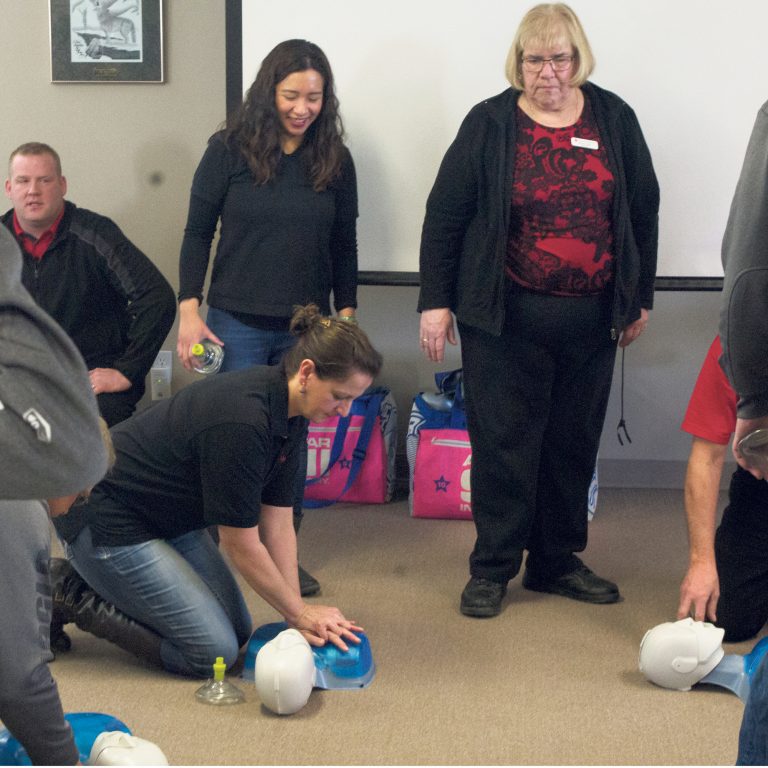
Over the last two and a half decades, Karen Hindle has seen a lot of nervous students.
Whether it’s instructing first aid classes or teaching CPR, Hindle is used to calming nerves and reassuring anxious pupils who worry so much about doing the wrong thing that they don’t do anything at all.
It’s a tough barrier for teachers like Hindle to break through, given there’s only so much you can do in a simulated classroom setting. Nevertheless, it’s a vital part of training people to use automated external defibrillators (AEDs) and perform CPR.
“They get apprehensive, but that’s understandable,” says Hindle, a registered nurse by profession.
As an instructor, Hindle has a number of tricks and tips she uses to help her students. Sometimes it’s as simple as reminding them to call paramedics rather than stand still and do nothing. Other times she tells them about the intricacies of Good Samaritan Laws, legal statutes put in place by provincial governments to protect non-health care workers who are trained in first aid and CPR.
Still, nothing is perfect. It’s one thing to teach somewhat what to do, but giving them the confidence in the real world is a bit more difficult.
“If they’re afraid to do something for fear of doing something wrong, at least activate EMS,” Hindle says. “Stay with the person and provide comfort. That usually helps alleviate some of their apprehension.”
Developing confidence isn’t a challenge that’s unique to Hindle’s classroom either, and it’s one health groups across Saskatchewan are embracing as part of Health Month, held every February. Studies by the Canadian Red Cross show that of the 2.5 million Canadians trained to provide first aid, only about 25 per cent of them actually respond when the opportunity arises.
Parkland Ambulance Care Ltd. paramedic and spokesperson Lyle Karasiuk says there’s clearly a confidence issue, but figuring out ways to deal with it hasn’t been easy.
“It’s trying to break down that fear barrier,” Karasiuk explains. “One of my biggest, biggest things I say to people is, ‘do something. Something is better than nothing.’ The something might be calling for help. It might be getting the AED. We hope it’s more than that … but we hope that people do something.”
Karasiuk says the confidence issue has always been there. He points to online sites like YouTube, where you can find videos of people experiencing medial emergencies in public places while strangers walk by or otherwise ignore them.
Some organizations, like Ambulance New Brunswick, have taken to creating instruction videos featuring four-year-olds using AEDs, just to show just how simple they are to use.
The goal is to get people out of their comfort zone. Karasiuk says those first steps are small, but necessary.
“I think people are just scared that they’re going to make a mistake. They’re scared of the people watching them … they’re worried about, ‘will I hurt them,’ and none of that exists. We just want people to get out there and do something.”
